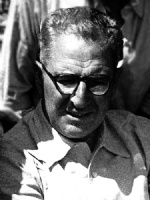Juan Antonio Suanzes facts for kids
Quick facts for kids
Juan Antonio Suanzes Fernández
|
|
|---|---|
 |
|
| Minister of Industry and Commerce | |
| In office 31 January 1938 – 9 August 1939 |
|
| Preceded by | Joaquín Bau |
| Succeeded by | Luis Alarcón de Lastra |
| Minister of Industry and Commerce | |
| In office 19 July 1945 – July 1951 |
|
| Preceded by | Demetrio Carceller Segura |
| Succeeded by | Joaquín Planell Riera (Industry) Manuel Arburúa de la Miyar (Commerce) |
| Personal details | |
| Born | 20 May 1891 Ferrol, Coruna, Spain |
| Died | 6 December 1977 (aged 86) Madrid |
| Occupation | Naval engineer |
Juan Antonio Suanzes Fernández (born May 20, 1891 – died December 6, 1977) was an important Spanish naval engineer. He also served as a government minister. Before the Spanish Civil War (1936–1939), he managed a shipyard. During the war, he helped the Nationalist side. He became the Minister of Industry and Commerce from 1938 to 1939. He held this role again from 1945 to 1951.
Contents
Juan Antonio Suanzes Fernández was born in Ferrol, Spain, on May 20, 1891. He was the oldest of six children. His family had a long history with the navy.
He went to a religious school when he was young. At age 12, he joined the naval school in Ferrol. He quickly moved up in rank. He became a midshipman in 1906 and a navy ensign in 1909. He worked on several ships, including the Numancia and the España.
In 1915, Suanzes started studying naval engineering. By 1917, he was a captain of naval engineers. He also taught at a naval military school. In 1920, he became the director of the Cartagena shipyard. This shipyard belonged to a company called the Sociedad Española de Construcción Naval (SECN). He was in charge of the Cartagena shipyard until 1926. Then, he moved to run the shipyard in Ferrol.
In 1932, he moved to Madrid with his family. There, he became the Inspector General of Construction for the SECN company. He was a very patriotic person. He worried that British owners of SECN were stopping the company from becoming fully Spanish. In 1934, Suanzes left SECN because of this "interference." He then started his own small company.
During the Spanish Civil War
The Spanish Civil War was a big conflict in Spain from 1936 to 1939. When the war began, the company Suanzes worked for was taken over by the government. In late 1936, Suanzes found safety in the Polish embassy.
In 1937, he left the embassy and traveled to Salamanca. There, he offered his help to General Francisco Franco, who led the Nationalist side. Suanzes was made a colonel of naval engineers. His job was to help fix and save ships.
In June 1937, he went to Rome, Italy. He asked for help to repair Spanish naval ships. At first, his request was turned down. But then, Benito Mussolini, Italy's leader, stepped in. Suanzes was able to get many Spanish ships repaired and rearmed by the Italians.
Franco then made him the Minister of Industry and Commerce on January 31, 1938. The ministry was in Bilbao. His main job was to help industries recover in areas that the Nationalist forces were taking control of. On August 9, 1939, he was replaced by Luis Alarcón de Lastra.
Leading Spanish Industry
After the Civil War, a new law created the Office of Construction and Naval Military Industries. On September 23, 1939, Suanzes was put in charge of this new organization. He wanted to create a new system for building naval ships. However, the Minister of the Navy delayed his plans. Suanzes resigned in July 1941.
On September 25, 1941, the Instituto Nacional de Industria (INI) was created. This was a national institute for industry. On October 17, 1941, Suanzes was named its president.
He was appointed Minister of Industry and Commerce again on July 20, 1945. He also remained president of the INI. He stayed as Minister until July 19, 1951. After that, he continued to be the president of the INI until 1963. That year, Franco accepted his resignation.
Even while working at the INI, Suanzes remained a naval officer. He became a Brigadier General in 1950. He also joined the High Council for Scientific Research in 1940. He became president of the Juan de la Cierva company in 1942. He held this position for over twenty years. In 1956, he became the first president of the School of Industrial Organization. He held this role until 1963. He was also the first president of the Spanish National Committee of the World Energy Conference. He held this position for the rest of his life.
In 1960, Franco gave Suanzes and his family the special title of "Marqués de Suances." In 1963, he retired from all public work. He passed away in Madrid on December 6, 1977, at the age of 86.
See also
 In Spanish: Juan Antonio Suanzes para niños
In Spanish: Juan Antonio Suanzes para niños

